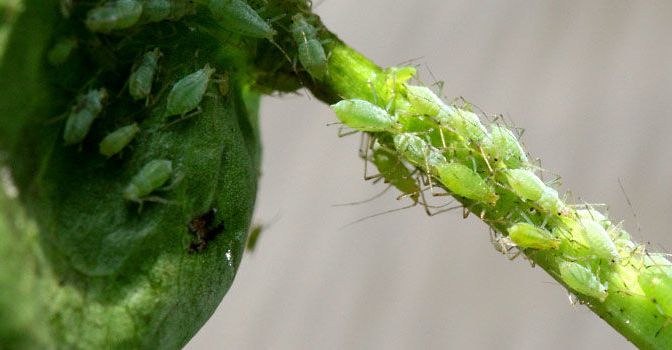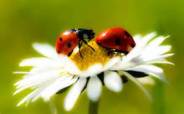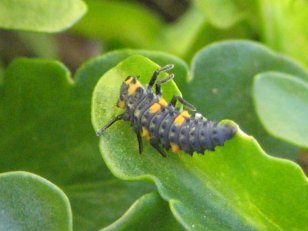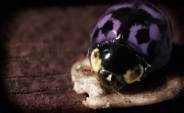Aphids
Host Plants:
In the garden: Ornamental trees and shrubs, including roses.
On Crops: Most vegetable fruit and ornamental plants.
Description:
Small, soft-bodied pear-shaped insects less than three millimeters long are usually aphids. Depending on species and plant, aphids may be beige, green, yellow or almost black. They tend to congregate in groups on new growth or in leaf crevices. See also black bean aphids and cabbage aphids.
Damage:
There are many symptoms of aphid damage, including decreased growth rates, mottled leaves, yellowing, stunted growth, curled leaves, browning, wilting, low yields and, eventually, death. Along with the loss of plant juices from direct feeding, aphids can spread diseases.
Preventing Problems:
Check plants often for early outbreaks. Clip off and compost stems holding aphid clusters. Encourage beneficial insects including lady beetles , syrphid flies, and lacewings
, syrphid flies, and lacewings , which are important aphid predators.
, which are important aphid predators.
Managing Outbreaks:
In small outbreaks, a high pressure spray from the garden hose can help remove aphids from plants. Follow up with two applications of insecticidal soap , one week apart. Be sure to apply the soap spray to leaf undersides and crevices.
, one week apart. Be sure to apply the soap spray to leaf undersides and crevices.
Tips:
Lady beetles and their larvae are great beneficial insects to welcome into your garden. Ants tend to be attracted to the honeydew left by aphids, so ant activity can often lead you to aphid colonies.












